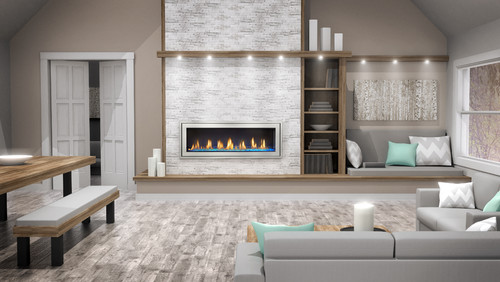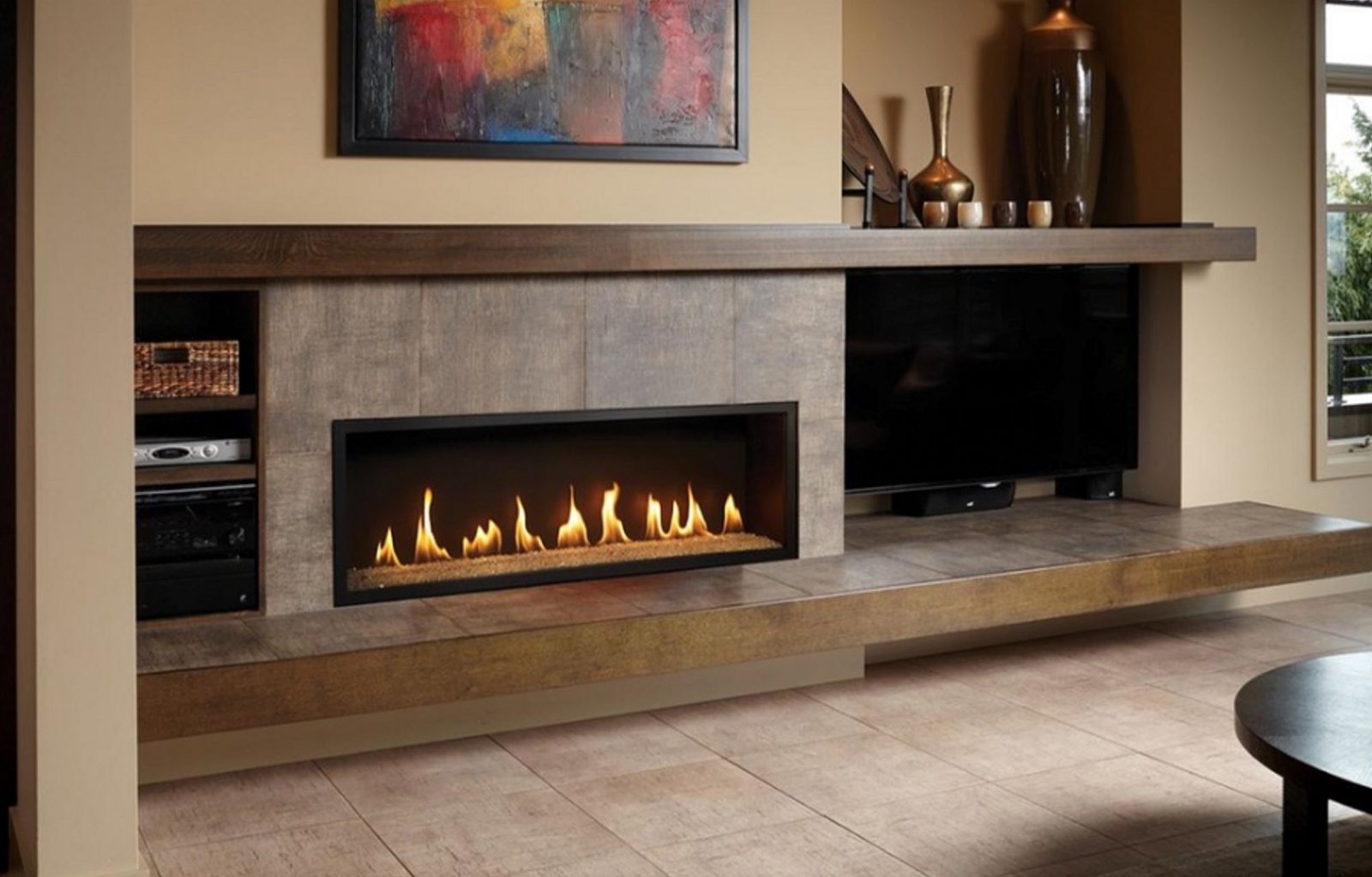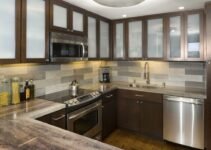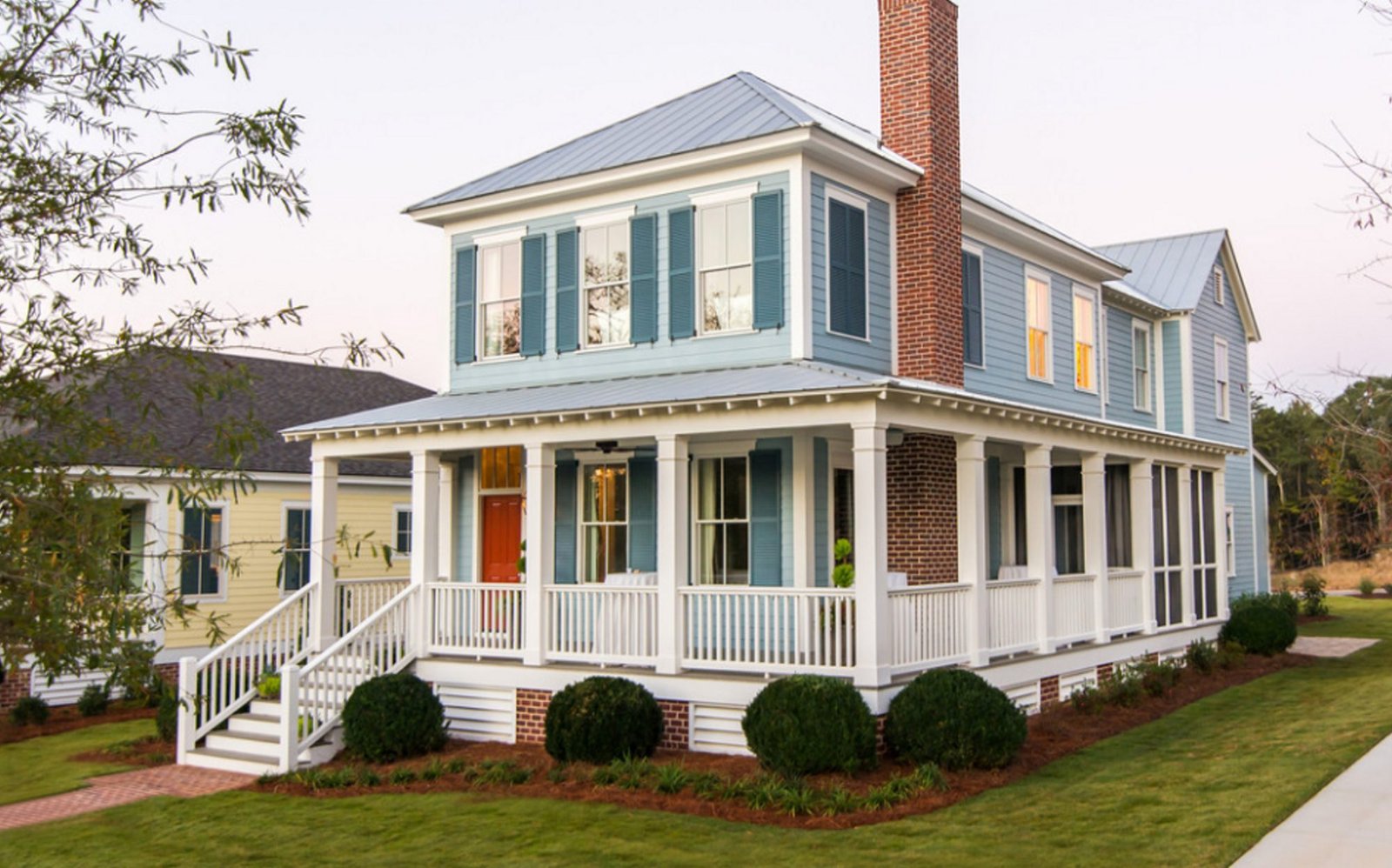If you are a skilled person when it comes to home repair, installing a gas fireplace may be something you could handle. If you are a handyman with some carpentry and dry walling experience, you shouldn’t have any trouble finishing this project. The fireplace will take you about a day to install.

Photo by Wyckoff Heating Cooling – Discover living room design ideas
Unlike wood fireplaces, which can be messy and inefficient, gas fireplaces generate instant, economical heat with the flip of a switch. Plus one more thing: A direct venting gas fireplace draws in air from the outside of the house. Because of this feature, it lacks a traditional chimney. This makes a direct vent fireplace possible for a handyman to install it.
A direct vent fireplace allows also, fireplace installation to be done in any room of your home since no chimney is needed. Once the fireplace is installed, you just flip a switch to start a roaring fire.
A gas fireplace installation has three primary components.
1. The gas piping into the home
2. Installation of both fireplace, and flue system
3. Electric wiring will be needed to be installed for the switch, plug, and thermostat.
The Centerpiece of Interior Design – Fireplace Mantel (howtobuildahouseblog.com)
Steps to Install a Gas Fireplace
1. Choose the placement of the fireplace
Consult the manufacturer’s specifications to make sure your chosen location has adequate clearance in all directions. Gas heats by combustion and so needs enough air space around it for safety considerations.
2. Build the platform
The fireplace unit is dangerous to have it sit directly on the floor. To get the fireplace off of the floor, you will build a platform. Use materials that match the room to give the fireplace the space it needs according to the manufacturer’s instructions.
3. Place the fireplace
When you have found the spot in the room where you want to place the fireplace and placed the platform, set the fireplace on top of the platform.
4. Arrange a gas line to terminate in the correct location
The size of the gas pipe is determined by size and location of the actual fireplace. As this involves working with existing gas lines or installing a new one (complete with tank in the case of propane), you should hire a licensed plumber to do the work.
Warning: Working with both gas and electricity are hazardous and closely regulated by building departments.
For safety purposes, a shutoff valve is also required and is specified by your building code.
5. Install the piping
a) Start by attaching a straight pipe to the starting collar on top of the fireplace using stove cement.
b) Different fireplaces require different gaskets to completely attach the pipe to the collar. Follow manufacturer’s instructions for the gasket.
c) Then, you will attach a 90 degree elbow and another straight pipe to the first straight pipe.
6. Cut the holes for the direct venting system
Because a direct vent fireplace uses a two layer design to keep the exterior of the vent pipe from heating to dangerous levels, you can run a vent straight out through a wall or up through the ceiling and out the roof. Read the installation manual thoroughly before you decide how to vent your fireplace. You will need to check the exact dimensions required for various clearances.
a) Use a pencil to trace a circle around the second straight pipe and then move the fireplace platform and the fireplace out of the way.
b) Cut out the 12-in. square hole with a drywall saw and look for obstructions. If there’s a wall stud in the way, cut out the drywall between the two closest studs and about 9 in. above the square opening.
c) Frame around the opening with short pieces of lumber slid through the hole and held in place with screws through the drywall.
d) On the outside wall, use the appropriate tools based on your materials to complete the hole you started on the inside.
e) Inside the house, caulk around the hole you created. Install the interior fire-stop by pressing it into the caulk and then screwing it into place.
7. Arrange the direct vent
a) Use sheet metal screws to attach the two supplied vent pipes to the fireplace insert mounting plate. Be sure the exhaust pipe connects to the outlet marked “exhaust.”
b) Slide the straight piece of pipe you used to mark the hole earlier through the hole from the outside.
c) Use high-temperature caulk to seal the area around the pipe and the fire-stop.
d) Outside, install the exterior fire-stop and drip cap using appropriate tools for your type of exterior wall.
8. Electricity
A simple gas fireplace will operate without electricity.
However, if your chosen model has a blower or other electrical component, this would be the correct time to run an electric line over to the site of the unit. Hire licensed contractors to install and connect the electricity.
Warning: Working with both gas and electricity are hazardous and closely regulated by building departments.
The switch will be used to turn the fireplace on and off. It can also be set up to a wall unit or even a remote control. A key element of installing the fireplace is to make sure that you have the proper wiring in the location so that it can be connected to the fireplace. If the location that you have selected does not include wiring, you may need to run some in.
Many fireplaces can be set up to have controls that can be used to make the fire hotter or cooler. These controls can also help to change the color and type of the flame for gas fireplaces.
9. Finishing.
This is the part that requires artistry in addition to pure construction skills. You will need to build a surround for the fireplace, including a mantel if desired. Typically, mantels are not supplied with a fireplace insert, but they often can be purchased where inserts are sold. Solid oak mantels, such as the one shown, are also available from a number of suppliers.
Then remains is to drywall around the unit so that it joins seamlessly with the other walls. You will also need to drywall around the area you punched in the wall or ceiling to repair any damage done during vent installation.


